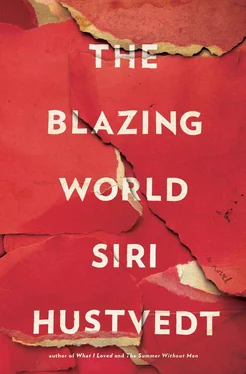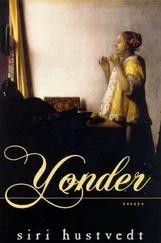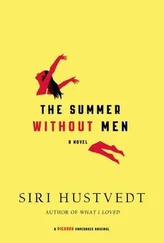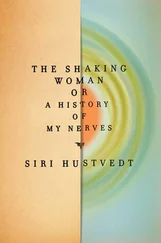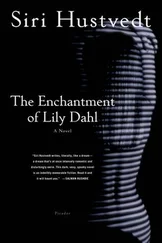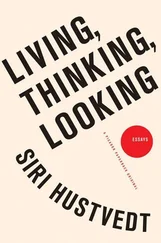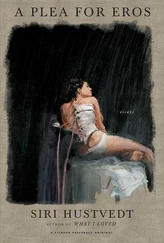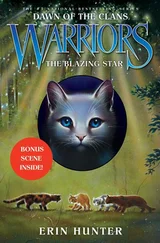For a while in the nineties, he adopted metrosexual affectations — cologne, manicures, hair mousse, body scrubs, self-tanners — and dutifully filmed all these applications for his diary. Then he stopped. He turned himself into an art cowboy au naturel —stiff jeans, boots, sweaty T-shirt. Not long after his Western incarnation, he appeared everywhere in sleek Italian suits and made loud statements about this or that artist, which entered the rumor mill. He understood his image, understood that he was his own object, a body to be sculpted in his work. “It’s fake,” he said. “The film diary is a big fake. That’s the point. It’s not that I staged it. It’s me waking up. It’s me at the parties. The fakeness comes from the fact that you believe you’re seeing something when you’re not seeing anything except what you put into the picture. That’s what celebrity culture is. It’s not about anything except your desire that can be bought for a price. I know that if I stick to some story about myself, I’ll get boring. Look at Madonna. My reinventions mean that I have no looks, no style. I’m bland, a bland blond. I haven’t created anything new. It’s been done before, but I’ve added little twists and turns, and people like it. I actively fight against every trace of originality.”
His stance was a tease, a smart, complicated tease about America as consumer heaven where things are neither original nor real. Whether they knew what he was talking about or not, Rune made people around him feel hip. The colored crosses were so simple, they excited people. They were as easy to read as road signs, but hard to read, too. What did they mean? Modeled on the Red Cross symbol in different colors, they could have been an ironic reference to the whole history of Christianity or to the Crusades. After 9/11 they looked prescient: East-and-West conflict, civilizations at war. Or were they just a shape? Yes, some critics went after him, but I didn’t notice that collectors cared. The true irony is that September 11 did change him. He felt he needed a new aesthetic, at least for a while. Maybe this led him to Burden, an artist so obscure she wasn’t even a has-been. Personally, I find her work to be little more than neo-Romantic gushing — high-flown, sentimental, and embarrassing — one big agonized groan that reminds me of a half-baked Existentialism. I have yet to penetrate the supposed interest of her “metamorphs.”
Political correctness and identity politics have infiltrated the visual arts as well as every other aspect of cosmopolitan American culture and account for a good part of the applause that her work now receives. The poor, neglected woman who couldn’t find a gallery! Poor Harriet Burden, rich as Croesus in five-hundred-dollar hats, the widow of one of the shrewdest dealers ever to work in New York City. My heart goes out to her. It throbs with sympathy. Art is not a democracy, but this blatant truth must not even be whispered in our prickly, tickly city of do-gooder, liberal, decaffeinated-skim-latte-drinking mediocrities blind to the facts. To suggest, even for an instant, that there might be more men than women in art because men are better artists is to risk being tortured by the thought police. And yet, read The Blank Slate by Steven Pinker, distinguished psychologist and a bold prophet of the new frontier — genetics-based sociobiology — and then tell me that men and women are identical, that they have the same strengths, that “gender” difference is environmental. Test after test in brain science has determined that men score higher on visual/spatial skills and mental rotation tests than women. Might this not, in part at least, be related to the dominant position of men in the visual arts? It’s evolutionary. It’s in the cards. Men are hunters and fighters, active, not passive, doers and makers. Women have been nurturers, caring for children. They had to stay close to the nest. Has there been discrimination and prejudice against women? Of course there has, but feminism hasn’t helped the cause; feminists have screamed about numbers and quotas and turned women artists into political tools. The good ones want nothing to do with feminism. Harriet Burden is the latest craze in a venerable tradition: the woman victimized by a “phallocentric” world, which stomped on her greatness.
Nevertheless, Rune was looking for a way to mix up his work — to add a retrograde element, to introduce something of the past, some nostalgia for the avant-garde, for Expressionism, for art before Warholian accommodation to the ultimate consumer fantasy — the world before Campbell’s soup. I think he found it in Burden. She didn’t find him. He found her. Later, he told me as much. The woman was well placed, and he had known her husband. Just for the record, Rune wasn’t gay. Women were all over the man. They sidled up to him. They brushed against him, as if by accident. They cooed and babbled at him with silly, dumbstruck expressions on their faces. Young and beautiful women and not-so-young-and-not-so-beautiful women couldn’t get enough of him. I recall a pool game Rune and I played together downtown. Afterward, we had a beer at the bar. A babe in her twenties, a real babe (forgive me if I ruffle any delicate feathers with this mild slang for “gorgeous female”) with dark hair and a tight shirt tied at her waist, so her navel with a little gold ring in it was just visible, walked over and sat down on the stool next to him. She didn’t say a word. He didn’t say a word. He didn’t buy her a drink. Niente . He turned to me and said, “Night, Ozzie.” I watched them leave the bar together and turn right at the corner.
For the profile on Rune I needed the facts. They’re sticklers for facts at The Gothamite . They check and recheck the facts. The joke on all this fastidious fact-checking is that you’re allowed to humiliate anybody, as long as the subject’s birth date, hometown, and all numbers connected to him are flawless. And you can quote out-and-out liars, as long as you quote them correctly. It gives roundness to a piece: a bit of positive, a bit of negative. We like balanced reporting. But balance is most important in things serious. Politics is serious. Muckraking is serious, and it must have prose to match. War zones require that all humor and/or irony cease and desist. The arts are not serious, not in the U.S. of A. They do not involve life and death. We are not French. In reviews of the arts, if you spell the guy’s name right, you can write whatever you want. You can send hate mail to whichever pompous ass you choose in the form of a review and make a reputation for yourself in the bargain. Do I offend? Excusez-moi.
H. L. Mencken once wrote that if a critic “devotes himself to advocating the transient platitudes in a sonorous manner,” he gets respect. The contemporary platitudes are: Dump on white males, encourage diversity, and destroy the canon; or conversely, wave the flag for the canon and old-fashioned artistic virtues. Of course, Mencken was writing back in the day when college meant literacy. It no longer does. I could regale you for hours with stories of our interns, fresh from the Ivy League, who cannot distinguish between like and as , who cannot conjugate the verb to lie (as in lie down on the floor), whose diction errors give me gooseflesh, but from their semiliterate mouths come one transient “right-thinking” platitude after the other. How I yearn for the future, when these people who cannot write a cursive hand have taken over the world.
In the visual arts, Clement Greenberg was a successful dictator while his reign lasted, but that world is finished. And yet, the more writing generated around an artist, the better, especially if the arguments for said artist’s greatness sound suitably abstruse. I wasn’t reviewing Rune, however. For the profile and later for my book, I needed his life story. The facts are these: Born in Clinton, Iowa, in 1965 to Hiram and Sharon Larsen. One younger sibling: Kirsten. Father, owner of car repair shop. Mother takes in sewing. Described by neighbor as “a quiet, polite boy.” Attends Clinton High School. 1980, wins first at science fair. 1981, mother commits suicide by sleeping pills. 1982, arrest by local police for vandalism (decapitating garden dwarf in neighbor’s yard). Attends Beloit College for one year on scholarship. Transfers to University of Minnesota. Takes classes in engineering and media studies. Drops out after six semesters. Erratic transcript. Hitchhikes to New York City. 1987, cast as extra in the movie City Slaves . Same year becomes attached to Rena Dewitt, author of the novel City Slaves , who is briefly famous. Dewitt, daughter of the Percy Dewitt, heiress to pharmaceutical fortune, introduces new boyfriend to joys of big money — Hamptons parties, nightlife, and art world. 1988, begins self-documentary. 1989, declares himself an artist of one name only — Rune — in his Diary , ceremoniously amputating family name by holding up sheet of paper and cutting loose Larsen with a pair of scissors. 1991, debut in group show at P.S. 1: Just a Regular Guy [Diary entry 1556], film of Rune painted blue, à la Yves Klein, narrating his day to a small robot that nods its head up and down. Noted in New York Times as show highlight. Befriends and is often seen with model Luisa Fontana. Luisa comes to a bad end. She jumps from the eleventh floor of her apartment on East Sixty-seventh Street in April. Sad death of beautiful girl merits big story in the New York Post . Rune is mentioned as one of her coterie of friends.
Читать дальше
